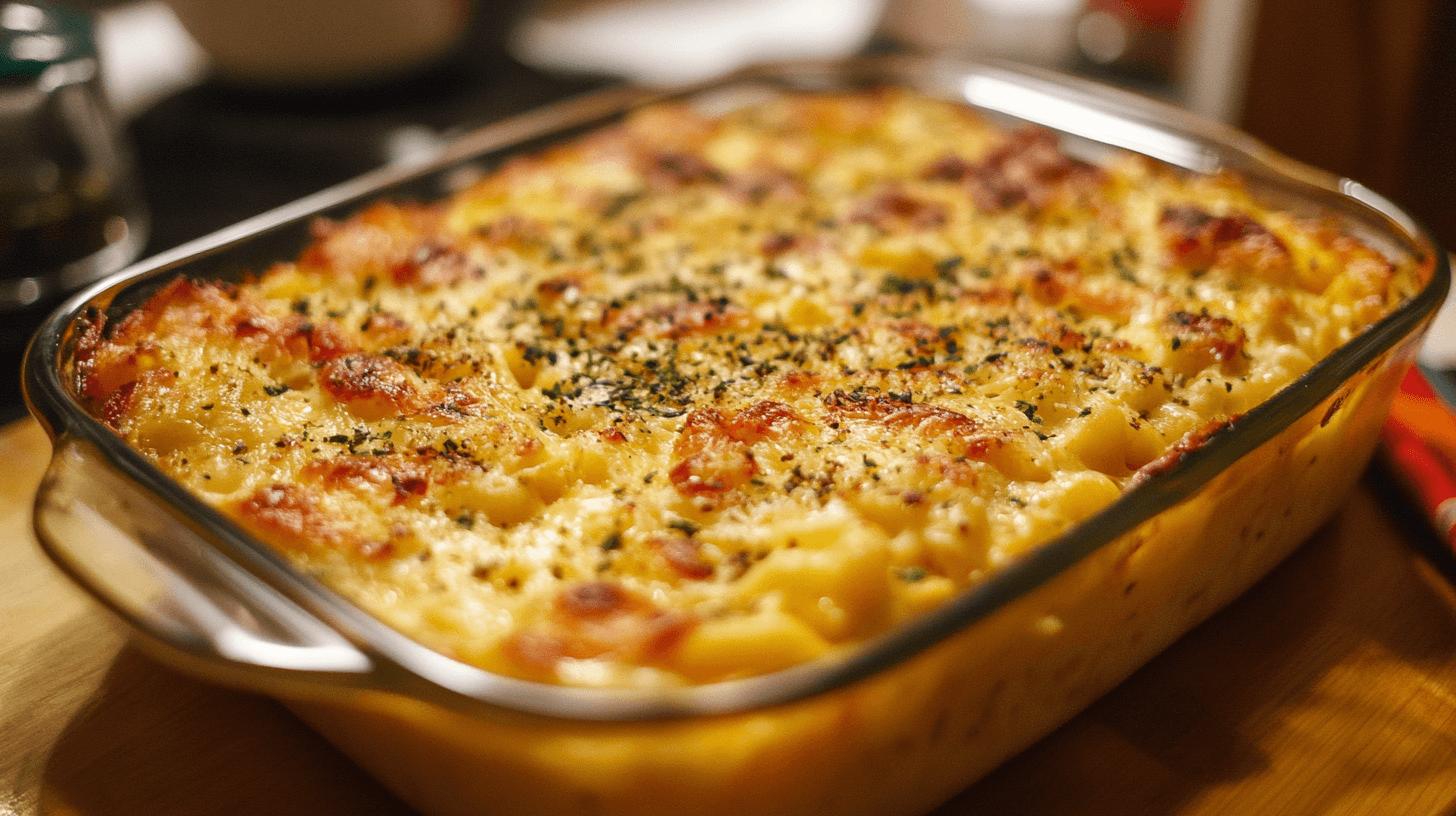Introduction
Mac and cheese, a timeless classic, is one of the most comforting dishes known to humanity. It’s a dish that transcends generations, cultures, and culinary preferences, offering a creamy, cheesy, and carb-filled experience that satisfies even the pickiest eaters. Whether enjoyed as a quick weeknight dinner or elevated for special occasions, mac and cheese remains a beloved staple in kitchens worldwide.
The History
The origins of mac and cheese can be traced back to ancient Rome, where recipes involving pasta and cheese were documented as early as the 13th century. However, the modern version we know today likely emerged in Europe during the Renaissance. Thomas Jefferson is often credited with popularizing mac and cheese in America after encountering it during his travels in Italy. He served it at a state dinner in 1802, sparking its rise in popularity across the United States.
Ingredients Breakdown
- Elbow Macaroni: The traditional pasta shape used for this dish, though other shapes like shells or penne work well too.
- Cheese: Cheddar is the go-to choice for its sharp flavor, but you can mix in mozzarella, Monterey Jack, Parmesan, or even blue cheese for added complexity.
- Milk/Cream: Whole milk or heavy cream creates a rich and velvety sauce.
- Butter: Adds richness and helps bind the ingredients together.
- Flour: Used to thicken the béchamel base for the cheese sauce.
- Salt & Pepper: Essential seasonings to enhance the overall taste.
- Paprika or Nutmeg (optional): For an extra layer of flavor.
Step-by-Step Recipe
- Cook the Pasta: Bring a large pot of salted water to a boil and cook the elbow macaroni according to package instructions until al dente. Drain and set aside.
- Prepare the Sauce: In a separate saucepan, melt butter over medium heat. Add flour and whisk continuously for about 1-2 minutes to create a roux.
- Add Milk: Gradually pour in milk while continuously stirring to prevent lumps from forming. Cook until the mixture thickens slightly.
- Incorporate Cheese: Reduce the heat to low and begin adding shredded cheese, one handful at a time, stirring until fully melted and smooth.
- Season: Stir in salt, pepper, and any optional spices like paprika or nutmeg to taste.
- Combine: Pour the cheese sauce over the cooked pasta and toss gently to ensure every piece is coated evenly.
- Serve: Enjoy immediately as a creamy stovetop version or transfer to a baking dish for a baked variation topped with breadcrumbs or additional cheese.
Tips
- For an extra creamy texture, use half-and-half or heavy cream instead of whole milk.
- To avoid lumpy sauce, add milk gradually and keep whisking consistently.
- If making a baked version, preheat your oven to 375°F (190°C) and bake uncovered for 20-25 minutes until bubbly and golden on top.
- Shred your own cheese rather than using pre-shredded bags, as homemade shreds melt more smoothly.
Variations and Customizations
While classic mac and cheese is hard to beat, there are countless ways to personalize this dish:
- Spicy Twist: Add diced jalapeños or red pepper flakes for a kick of heat.
- Vegetarian Boost: Mix in roasted vegetables like broccoli, spinach, or bell peppers for added nutrition and flavor.
- Protein Power: Incorporate bacon bits, cooked chicken, or pulled pork for a heartier meal.
- Gourmet Flair: Experiment with gourmet cheeses such as Gruyère, fontina, or aged cheddar for a sophisticated twist.
- Kid-Friendly Fun: Shape the dish into fun forms using molds or add colorful sprinkles for parties.
Health Considerations and Nutritional Value
Traditional mac and cheese is indulgent due to its high fat and calorie content from cheese, butter, and cream. However, healthier alternatives exist:
- Use whole grain pasta for added fiber and nutrients.
- Opt for reduced-fat cheese or incorporate nutritional yeast for a dairy-free option.
- Increase vegetable content by mixing in cauliflower or zucchini puree into the sauce.
- Leverage Greek yogurt or cottage cheese to reduce saturated fats without sacrificing creaminess.
A standard serving of classic mac and cheese contains approximately 400-600 calories per cup, depending on the recipe. Balancing portion sizes and pairing with lighter sides can help maintain dietary goals.
FAQ
- Can I make mac and cheese ahead of time?
- Yes! Prepare the dish up to a day in advance and refrigerate. Reheat gently on the stovetop or in the oven before serving.
- What type of cheese works best?
- Sharp cheddar provides the quintessential flavor, but blending cheeses adds depth. Try combining cheddar with mozzarella, Parmesan, or smoked gouda.
- How do I fix a broken cheese sauce?
- If the sauce separates, remove it from heat and whisk vigorously. Alternatively, stir in a small amount of hot water or milk to re-emulsify.
- Is mac and cheese suitable for vegans?
- Absolutely! Replace dairy products with plant-based options like almond milk, vegan cheese, and nutritional yeast for a delicious vegan version.
Summary
Mac and cheese is a universally adored comfort food with endless possibilities for customization. Whether you prefer a simple stovetop preparation or an elaborate baked casserole, this dish delivers unmatched satisfaction.
From its historical roots to modern-day innovations, mac and cheese continues to evolve while remaining a cherished favorite among home cooks and chefs alike.

